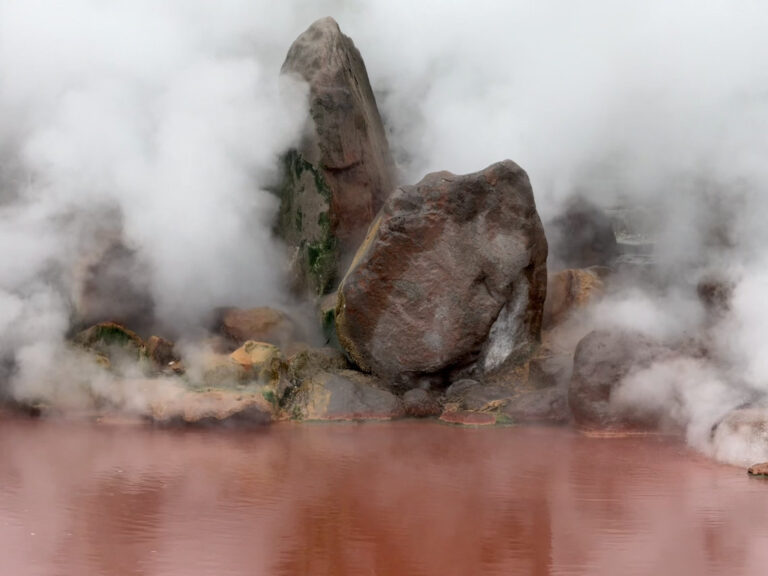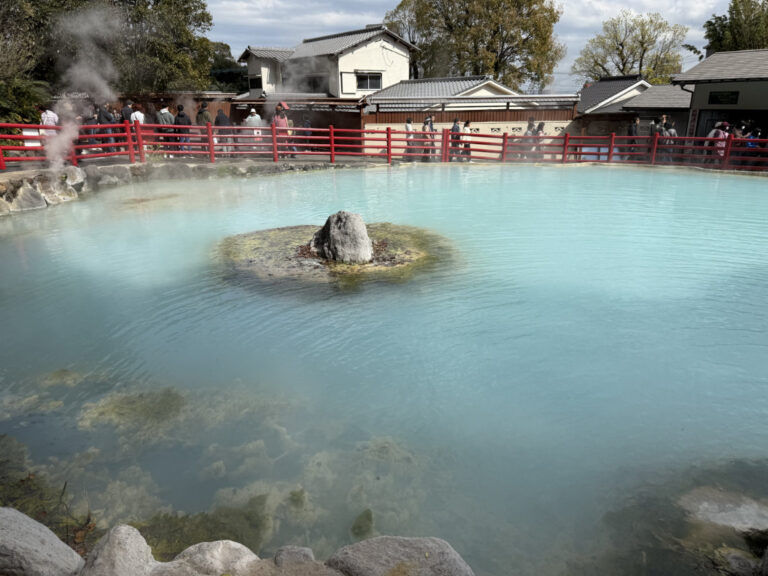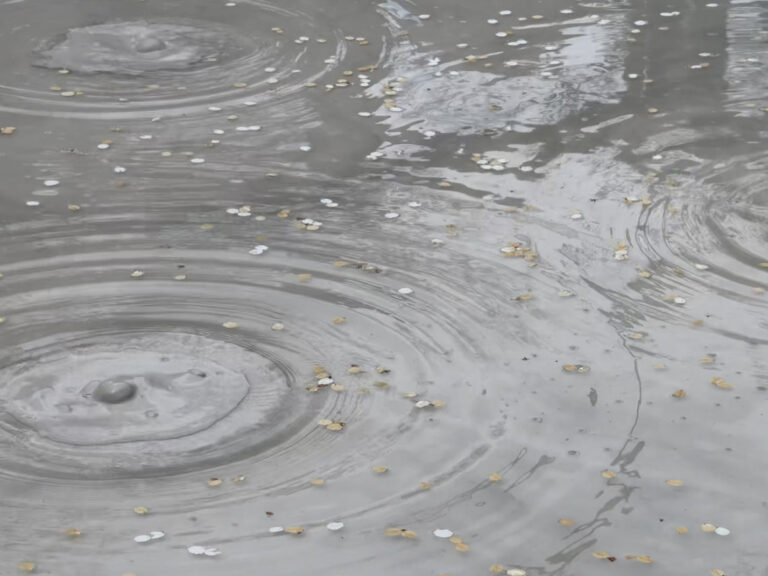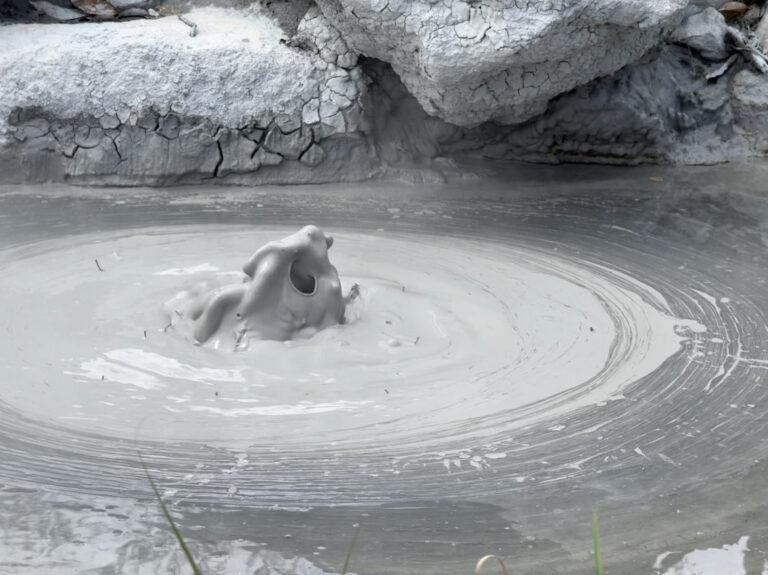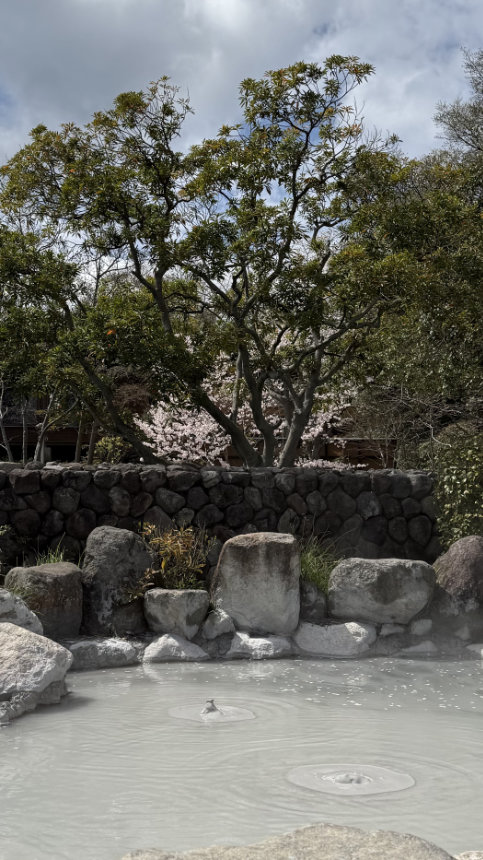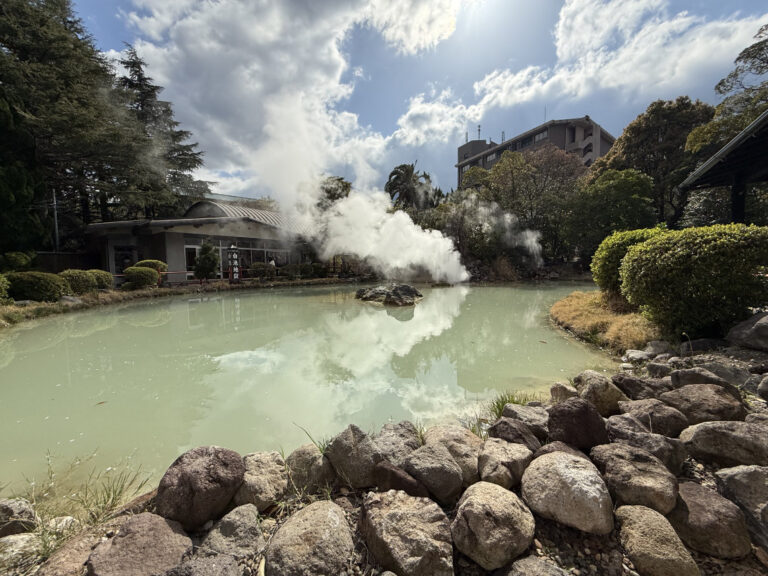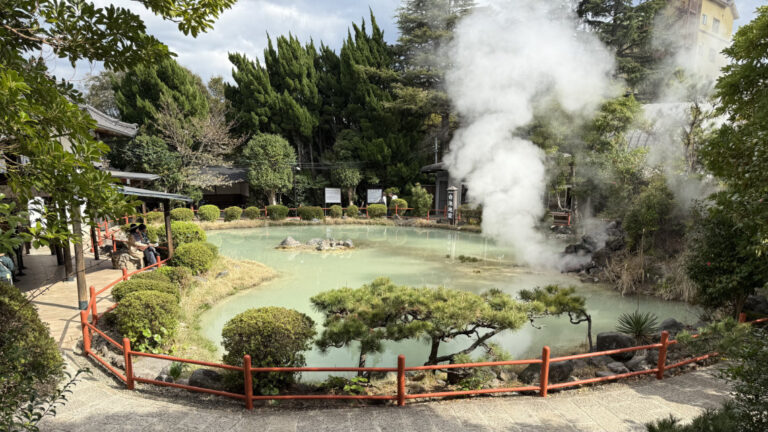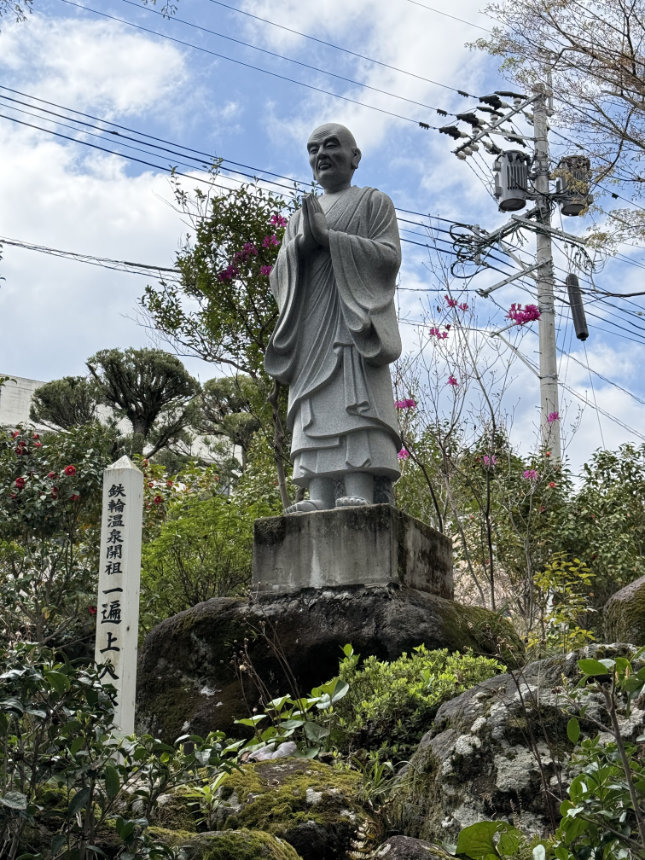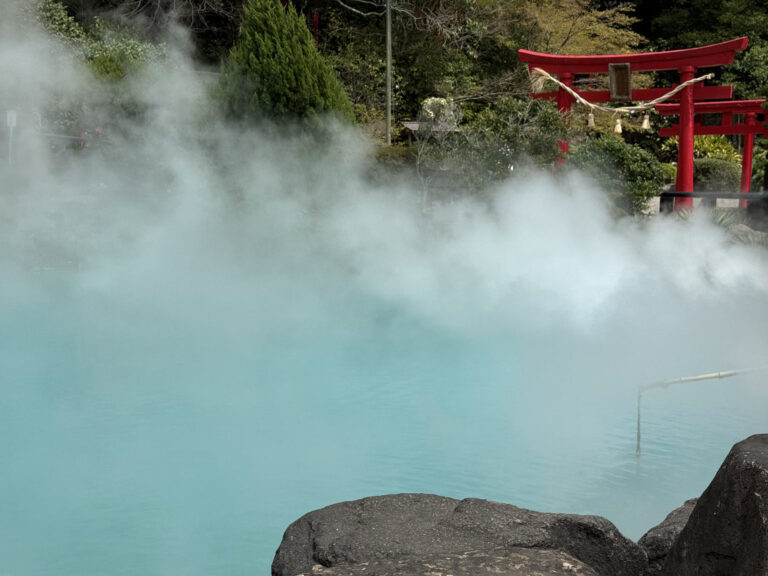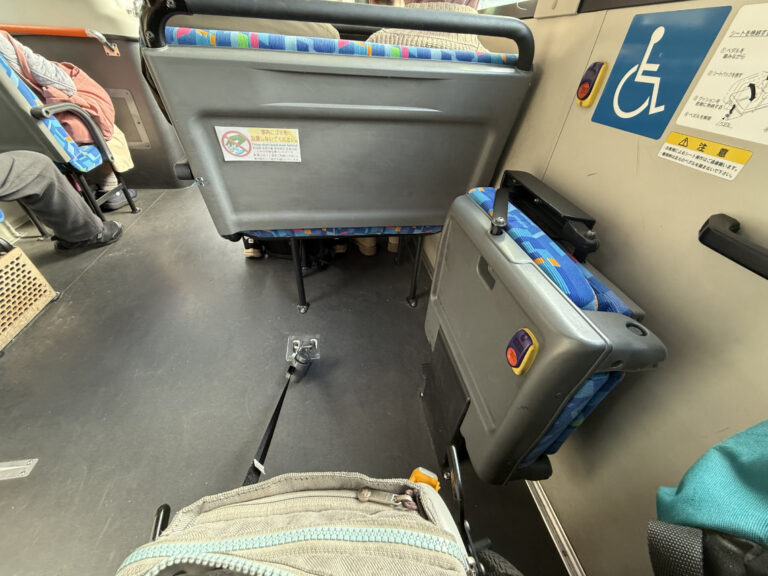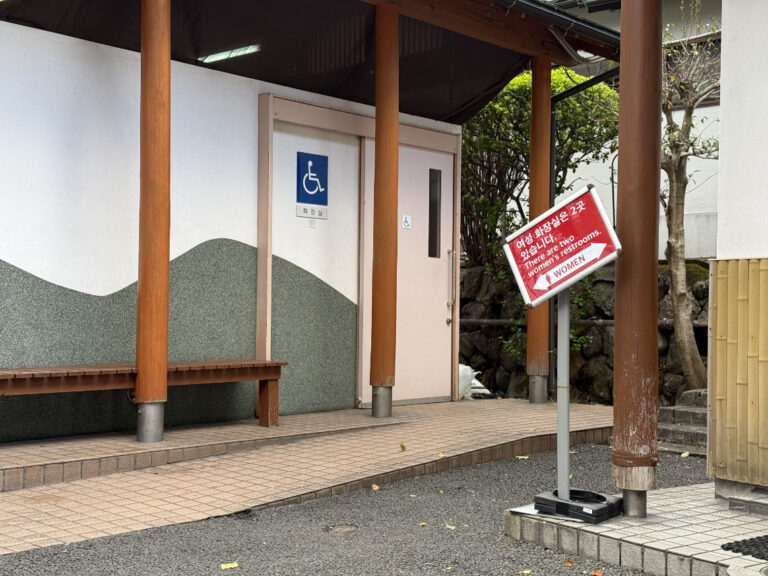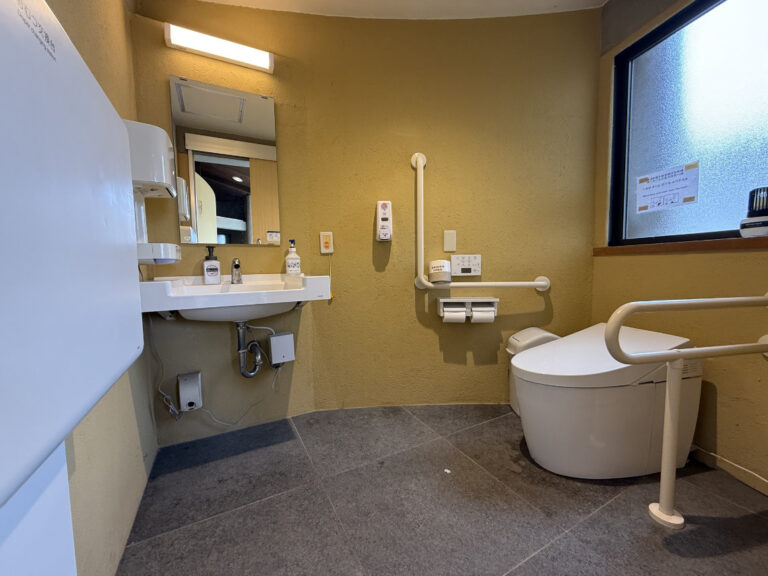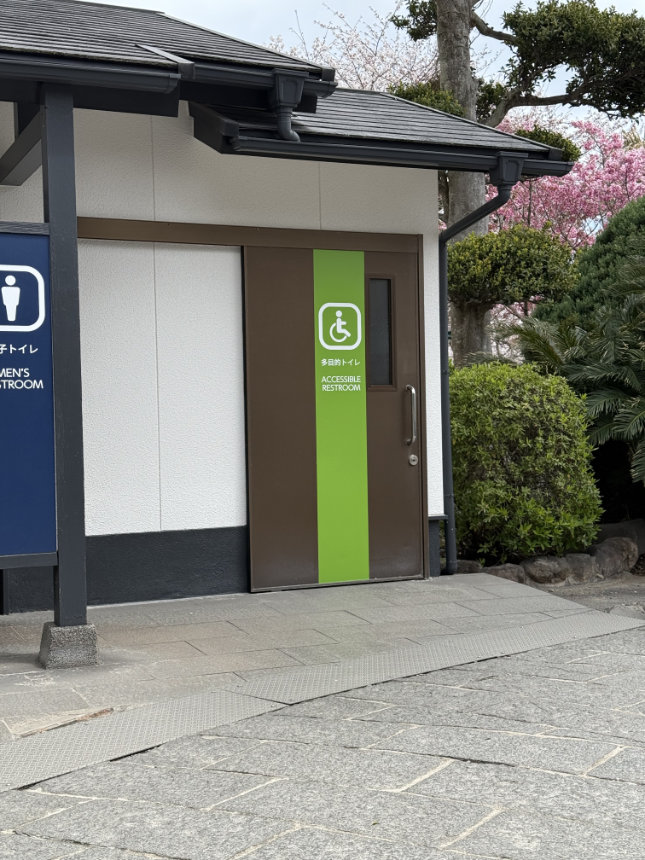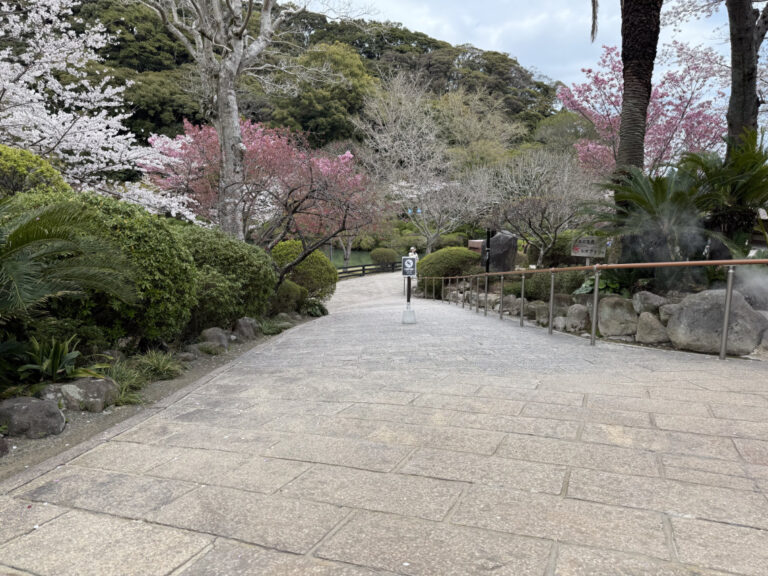Besides the countless number of onsen, Beppu is also known for its Hells or Jigoku, a series of natural lakes and steaming vapor plumes of hot water. These lakes filled with thermal springs rising from below the surface of the Earth are tinted in deep bright colors depending on their chemical compounds: bloody red, turquoise blue, milky white or muddy brown. If you are in the area, do not miss the opportunity to visit this bubbling landscape as, despite its hellish appearance, it is surprisingly accessible.
General information
Although there are more throughout the city, 7 are listed as the official Hells of Beppu: Umi Jigoku, Oniishi Bozu Jigoku, Kamado Jigoku, Oniyama Jigoku, Shiraike Jigoku, Chinoike Jigoku and Tatsumaki Jigoku. These are also the ones that you will be able to enter if you buy the Hells’ Pass, available for purchase at the ticket booths at the entrance of any of the hells.
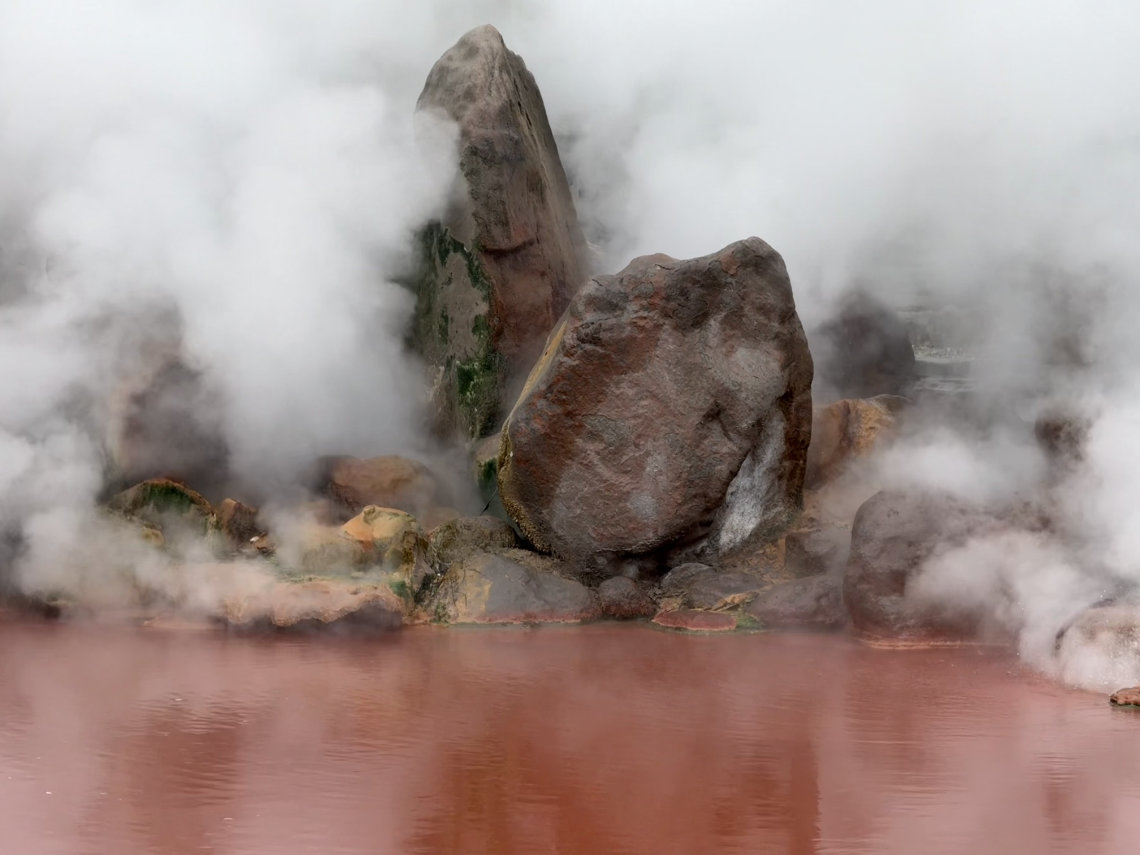
The standard admission price for a single hell is ¥500. With the disability discount it is ¥300. Anyone with either a Japanese or an international disability card or certificate can get the discount. The pass for the 7 hells is ¥2,400 in total. There is no disability discount for the pass, so if you are entitled to a discount it is better to buy single tickets at each entrance. Even if occasionally there is quite the queue at some of the most popular hells (when a tour bus arrives), they tend to move quite fast, so not being able to get the pass is not that inconvenient.
All hells are located away from the center of Beppu towards the mountains. Five of them are in the same area, so, once you are there, you can visit all of them on foot or on wheels. It is recommended to start at Umi Jigoku and Oniishi Jigoku and go down from there to Kamado, Oniyama and Shiraike Jigoku in this order, as the way will be downhill.
Chinoike and Tatsumaki Jigoku are near each other, but a bit more than 2 kilometers away from the rest. There are several buses connecting the two main areas. Opening times for all hells are from 8am to 5pm.
Getting there
The main means of transport around Beppu (and also to get to the Hells) is the city bus, which can be a bit of a hit or miss in terms of accessibility. Even if all buses have the blue wheelchair mark on them, depending on the model of bus, not all of them will allow you to board if you are traveling on your own or if your wheelchair is not foldable. Adding to the complication, not all buses on the same line are of the same model, so you cannot count on a specific line to be always accessible or otherwise. (Ramps for city buses can be very steep. Deployment often depends on this steepness, as the usability can be limited by the bus model – one or two boarding steps – and the bus stop configuration – sidewalk level, platform, etc. – potentially making the incline impractical.)
If you do not want to depend on the bus, hiring an accessible taxi may be a better option. Additionally, there is an organization of people with disabilities that offers transportation both for locals and tourists in an accessible van. They are called Beppu / Oita Barrier Free Tour Center and, as their name suggests, they also organize accessible tours, both around the area and to the hells.
Another popular option among tourists to move between hells are tour buses. Unfortunately, they are highway-like buses with no accessibility whatsoever.
Accessibility
The Hells are wheelchair accessible and quite easy to move around, except for a few steep inclines. Paths are quite smooth and well-paved and, aside from two short side stretches at Umi Jigoku that you may skip, there is no gravel. There are some inaccessible areas outside main trails, with a few steps and narrow uneven ways, but it is still possible fully enjoy the experience without using those trails. Rest assured that you can get to and have a good view of all main lakes, plumes and ponds in a wheelchair.
Furthermore, either within the hell grounds or nearby, at annex buildings or next to the cafeteria at the entrance of Umi Jigoku, there are many accessible restrooms available. Here is a sample of an accessible toilet at Oniishi Bozu.

In an electric wheelchair, there should not be an issue with the few steep inclines. For manual wheelchair users, there are a couple in Umi Jigoku (one to go up and another to go down the area with the red lake) that may be challenging. It is also important to note that, even though there are no steep slopes at Oniishi Bozu Jigoku, the entire path is slightly uphill. At Kamado Jigoku, there are also some short steep inclines and paths are a bit more narrow and crowded than the rest of the hells. The short slope at Shiraike Jigoku presents a relatively steep incline. Although it comes last in a suggested route that is primarily downhill, experiencing it is recommended. Situated within a beautiful Japanese garden, this location frequently becomes a favorite among those who visit.

For those that cannot walk long distances, every now and then, there are places to sit and rest in all hells (hopefully, not forever!). However, the whole tour will add up to more than 1 kilometer. On the good side, there are wheelchairs available to borrow at a few of the hells, including Umi Jigoku and Oniishi Bozu Jigoku.
For those sensitive to smells or to air pollution, consider wearing a mask, as depending on the wind, the smell of sulphur can be quite strong.




